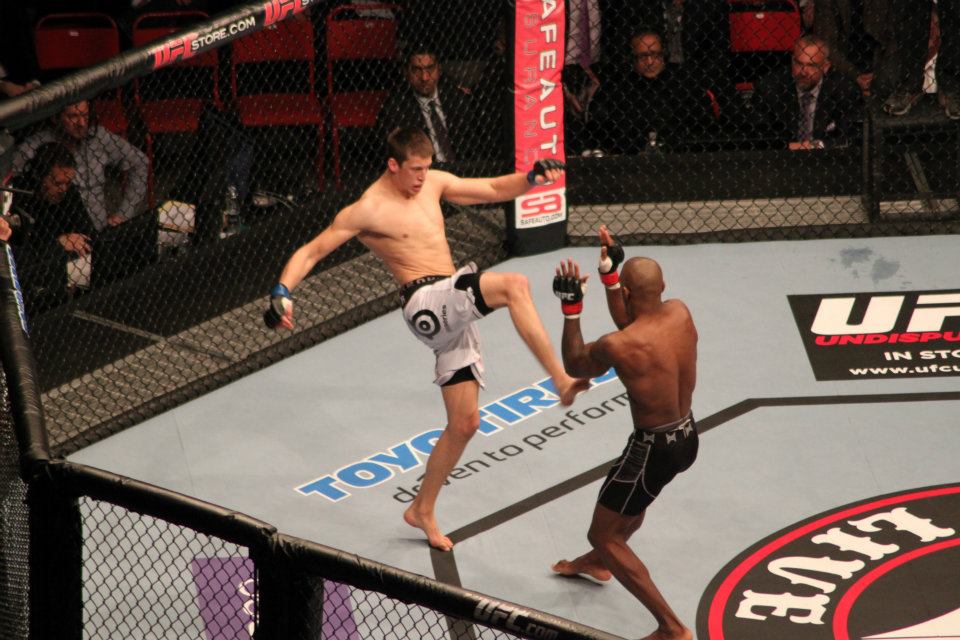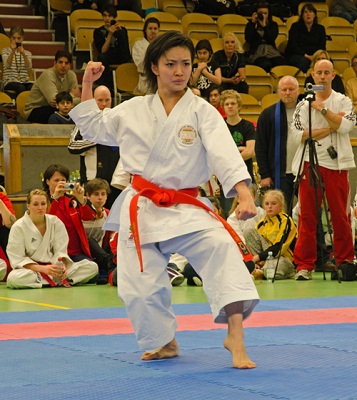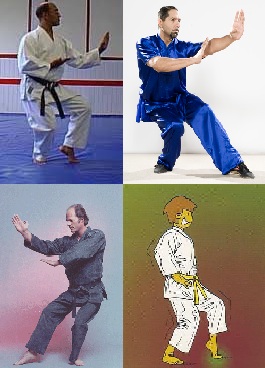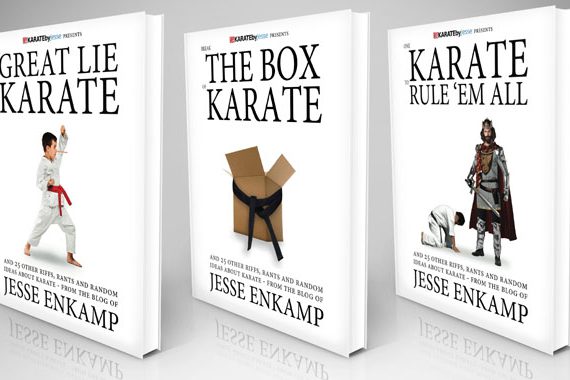Guys, I have a confession to make:
I love getting feedback.
And since I recently got some inspiring feedback from a national team member of a certain country about how they use my article on how to improve your shiko dachi in their training camps, I got the idea to do a similar post about nekoashi-dachi (neko-dachi) this time around.
Also known as the “cat stance”.

(“Neko” literally means “cat” in Japanese. “Ashi” means “foot/leg”).
Probably as underestimated as it is misunderstood, a picture-perfect nekoashi-dachi is akin to architecture in my eyes: the ultimate combination of art and engineering. It is high tech and low tech at the very same time; utilitarian and beautiful in the very same moment.
That’s why the nekoashi-dachi is perhaps the hardest of all stances to truly master.
Both theoretically and physically
However, as with all traditional Karate stances out there, the true mastery of nekoashi-dachi lies not so much in visual minutiae (like the fact that the back foot should be rotated 30 degrees outward according to the JKF [Japan Karate-do Federation]), but more in the internal machinery of the “stance”.
To put it briefly; it’s all about your center of gravity.
More specifically, your control over it.
Contrary to popular belief, the real value of nekoashi-dachi lies in its preceeding and subsequent transition – not its static execution or posing (with the notable exception of styles such as Goju-kai and Kojo-ryu, where it’s used as a ‘kamae‘).
Unfortunately, this knowledge isn’t as common as one could wish, which has led to the widespread misconception that the cat stance is “impractical” or “unrealistic” and “would never work in a real fight, dude”.
Oh…
Really?
To poke a hole in that myth, just take a quick look at this snapshot from a recent UFC (Mixed Martial Arts) event that my friend captured. Check out the “cat-stance”!

The real action in nekoashi-dachi happens when you shift your bodyweight (center of gravity) from your natural 50/50 weight distribution (or whatever position you happen to find yourself in) to the 90/10 (back leg/front leg) distribution of the nekoashi-dachi.
With this in mind then, it becomes quite easy to see how the cat stance is actually meant to be practically applied: Quick body shifts from attacks, drops for balance displacement, cutting the angle for defense/offense and much more.
The cat stance probably has as many uses as it has details.
So, now that we’ve got that out of the way; how do we improve the actual stance then? Sure, we know what/how/why it is meant to be used, but still… we want to make it look nice too, right?
Hell yeah we do!
Not only because the ugliest thing in the world has to be a bad nekoashi-dachi, but more importantly because in nine times out of ten the quality of your stance will be based more on how it looks rather than how it actually works (i.e.: being judged at gradings, demos, tournaments etc.).
And although the age-old debate whether “form follows function” or “function follows form” is certainly warranted when it comes to stances (and bunkai too), ultimately we must make function and form merge together into one.
So let’s make that nekoashi-dachi pop!
In my opinion, there are basically only three easy steps you need to follow to get a world-class cat stance in no time:
1. Copy this.
World champion of kata, Rika Usami, is a textbook example:

2. Don’t copy this:
While no disrespect is intended to any of these handsome gentlemen below, their nekoashi-dachi is too off-balanced; and therefore simply too impractical. That’s just not how we roll.

3. Done. Eat some organic chocolate and watch re-runs of Seinfeld. You’re awesome.
You now have a better understanding – and execution – of the cat stance than 98% of Karate practitioners in the world.
Believe me.
(4. What? Got issues? All right, let’s go on then.)
So, you’ve got a problem.
I totally understand.
Believe it or not, some people just can’t do a picture-perfect cat stance no matter how hard they try.
- Sure, they know what it should look like…
- …and they even know how it works…
- (and they might even know how to do it!)
…but they still CAN’T actually do it!
If this is the case with you, or if you just wish to have an even better nekoashi-dachi, I can think of two major things that may be impeding your cat stance progress:
– Problem #1: You have bad sight.
Solution: Revisit the 1500+ words I just wrote on the theory and application of the cat stance (remember to look at the images too), and this time make sure you actually have your reading glasses on.
– Problem #2: Your calves are tight.
Solution: If you have tight calf muscles, you are in for a bit of stretching my friend. (This is where the “almost painless” part comes into play in this article’s headline.)
In my experience, short calf muscles are the #1 reason for most people’s trouble with nekoashi-dachi, excluding misunderstood technical details (alignment of hips, knees, feet and back.)
So let’s talk about tight calves, shall we?
Great.
Most people who spend any time wearing shoes with heels (even slightly pronounced ones) probably have tight calves. Why? Because when your heel is elevated, whether it’s because you’ve raised up on your toes or you’re wearing a shoe with heels, your ankle is in a constant state of plantarflexion (moving toward an angle greater than 90 degrees).
When your ankle is in plantarflexion, your calf is contracted and “shortened” – which isn’t optimal. In fact, even if you’re just walking around in some good ol’ tennis shoes with just a half inch or two of heel, your calves are going to languish in mild contraction and end up in a semi-permanent tightened position over time.
(This is just one of the many reason for why I’ve been using barefoot shoes for years.)
Why is this a problem, you ask?
Well, if you have tight calves you probably recognize the following scenario: When you try to sink down on your back leg for the nekoashi-dachi, you can’t get very far down. So, you’ll naturally shift enough body weight forward to maintain your balance over your feet, but this requires ample amounts of ankle dorsiflexion (angle less than 90 degrees) of the back foot instead.
If your calves are too tight, you won’t be able to dorsiflex your ankle though, and your knees won’t be able to travel forward enough to shift a sufficient amount of bodyweight forward to maintain balance (you shouldn’t try to anyway, because the purpose of the nekoashi-dachi is to have the weight back!). So, in the end, tight calves force you to have a crappy nekoashi-dachi in more ways than one.
A good nekoashi-dachi is a all about finding that sweet spot between balance and counter-balance – eventually making it your second nature.
(Except if you have tight calves – then you’ll just have bad balance, because of all the compensating you’re forced to do.)
So, what’s the remedy?
Well…
- Reduce the time you spend in passive ankle plantarflexion (are you sitting with your heels elevated right now?).
- Start wearing minimalist shoes with a zero-drop heel. Or just go barefoot more often.
- When you sit down, try to keep your feet flat on the floor. Too often we point our toes to the ground and elevate our heels.
- Exercise your calves and ankles. Here’s a helpful video. Here’s another.
- Mobilize/stretch your calves and ankles. This is a great stretch clip (skip to 3:00). Here’s a quick article describing it.
Personally, I just recommend you squat as much as possible. Like, tons. And do ’em Zercher style (note the “shoes”!).
People who start working on their calves, combining stretching (static and dynamic) with strength training and mobility exercises, start noticing the effects pretty quickly. So I advice you to try it out as soon as you find time.
Your nekoashi-dachi will thank you, and your sensei too.
Anyways, with that being said, I think it’s about time to wrap this ‘troubleshooting’ section up and finally end this article.
Hopefully I have helped you a little bit further on the path to conquering the elusive yet mysteriously powerful cat stance, omnipresent in nearly all styles of Karate for a very good reason: It’s simply an awesome stance.
So make it pop, my friend!
Because a bad nekoashi-dachi might just be the ugliest thing in the world.
Right after a McDojo sign… 😉



10 Comments